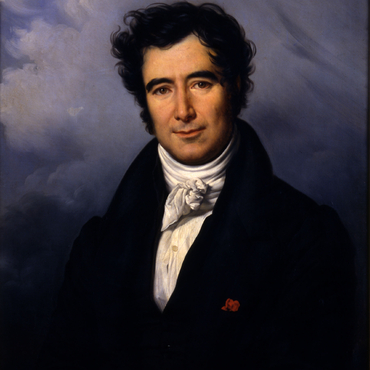
- Home
- Fresnel’s laboratory
- Lighthouses become a national project
- A lighthouses commission
In 1811, de Saint-Haouen, captain of the ship Le Coat and chief of staff of the imperial navy at Boulogne-sur-Mer, the port from which a fleet of French ships were preparing to invade the coasts of England, Proposed coordinating the various lighthouses' signals in order to make the coastline more "readable" for sailors. His idea involved red and blue lights, either alone or in pairs, side by side or superimposed, to mark the Flessingue shoreline at Dieppe. On 29 April 1811, the Director-General of Ponts appointed a Commission consisting of academics, sailors and engineers to examine the Saint-Haouen project, which was rejected, and to propose a "general system for placing lights along the coasts of the Empire". François Arago (1786–1853), a physician and professor at the Ecole Polytechnique, assumed leadership of the Commission, which he had joined in 1813. Arago had taken an interest in how lighthouses were lit after observing the inventions of Isaac Bordier-Marcet, an "engineer-lighting expert certified for lighting cities and lighthouses. Bordier-Marcet had succeeded Argand, the inventor of the Argand lamp. Under the Restoration, the Commission set to work, providing support for Fresnel's experiments and preparing a coastal lighting plan, with help from Navy hydrographers. In 2011, the Commission celebrated its bicentenary. Its composition had changed over time, but it is still consulted concerning the creation, removal or modification of light along France's coasts.



